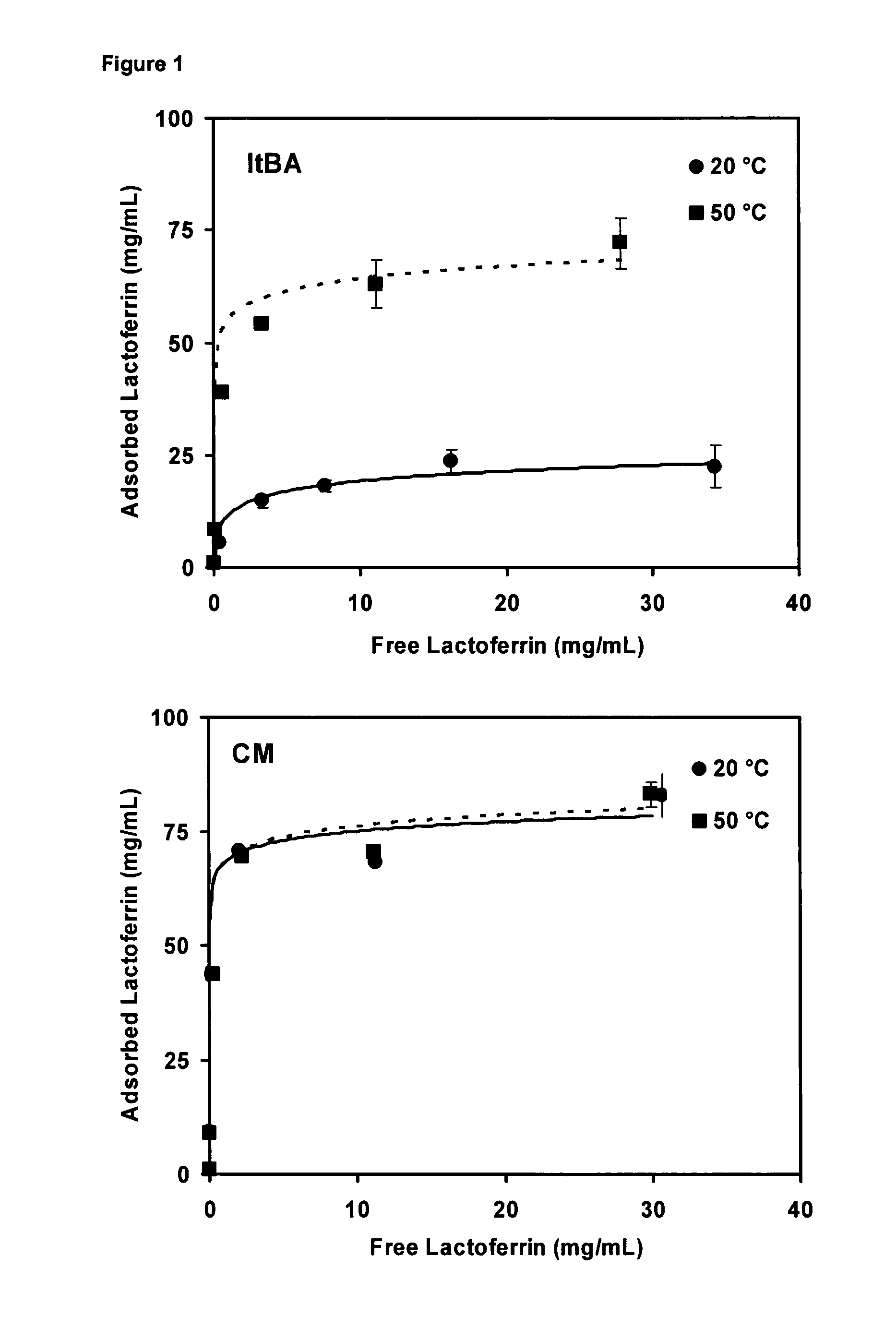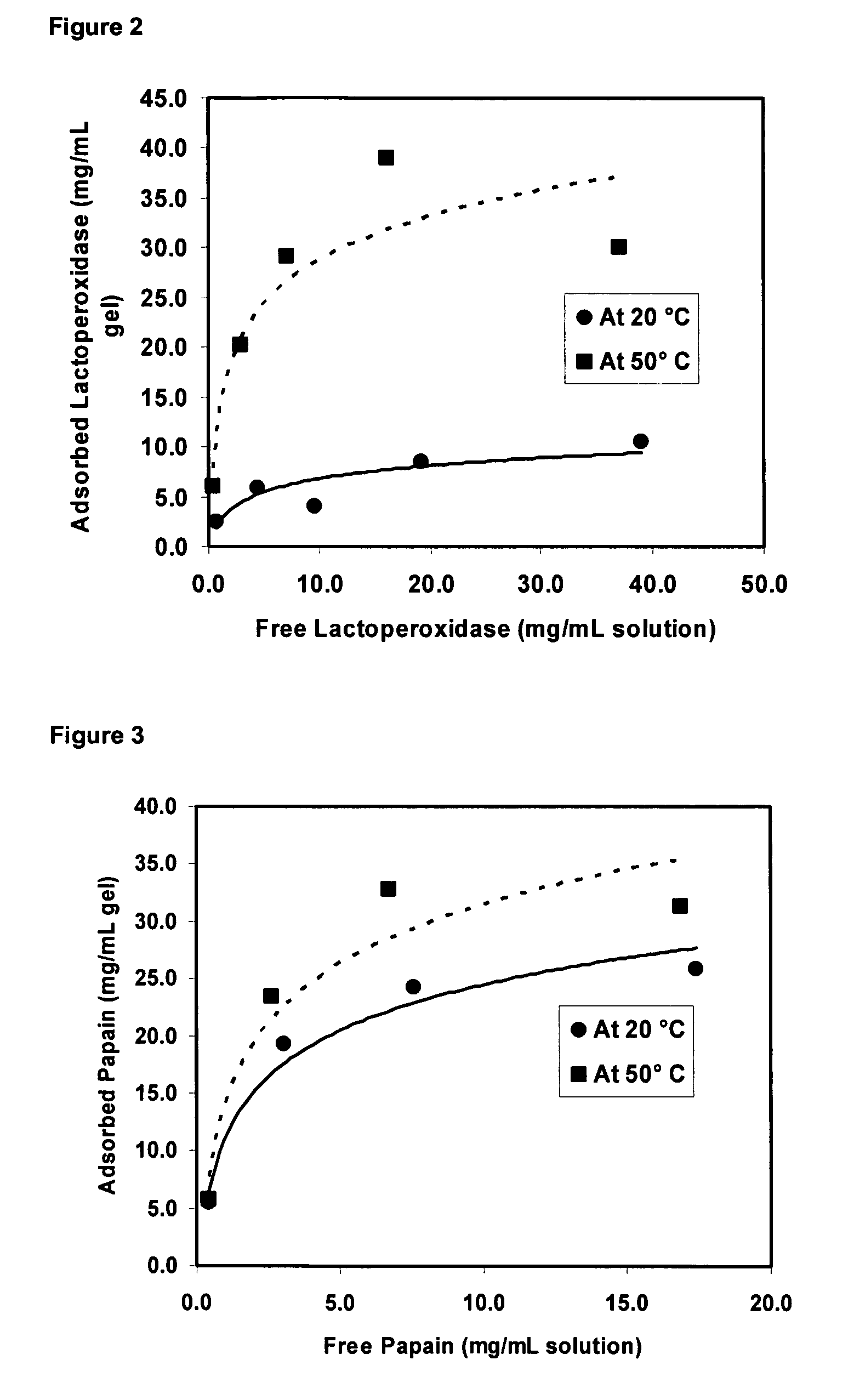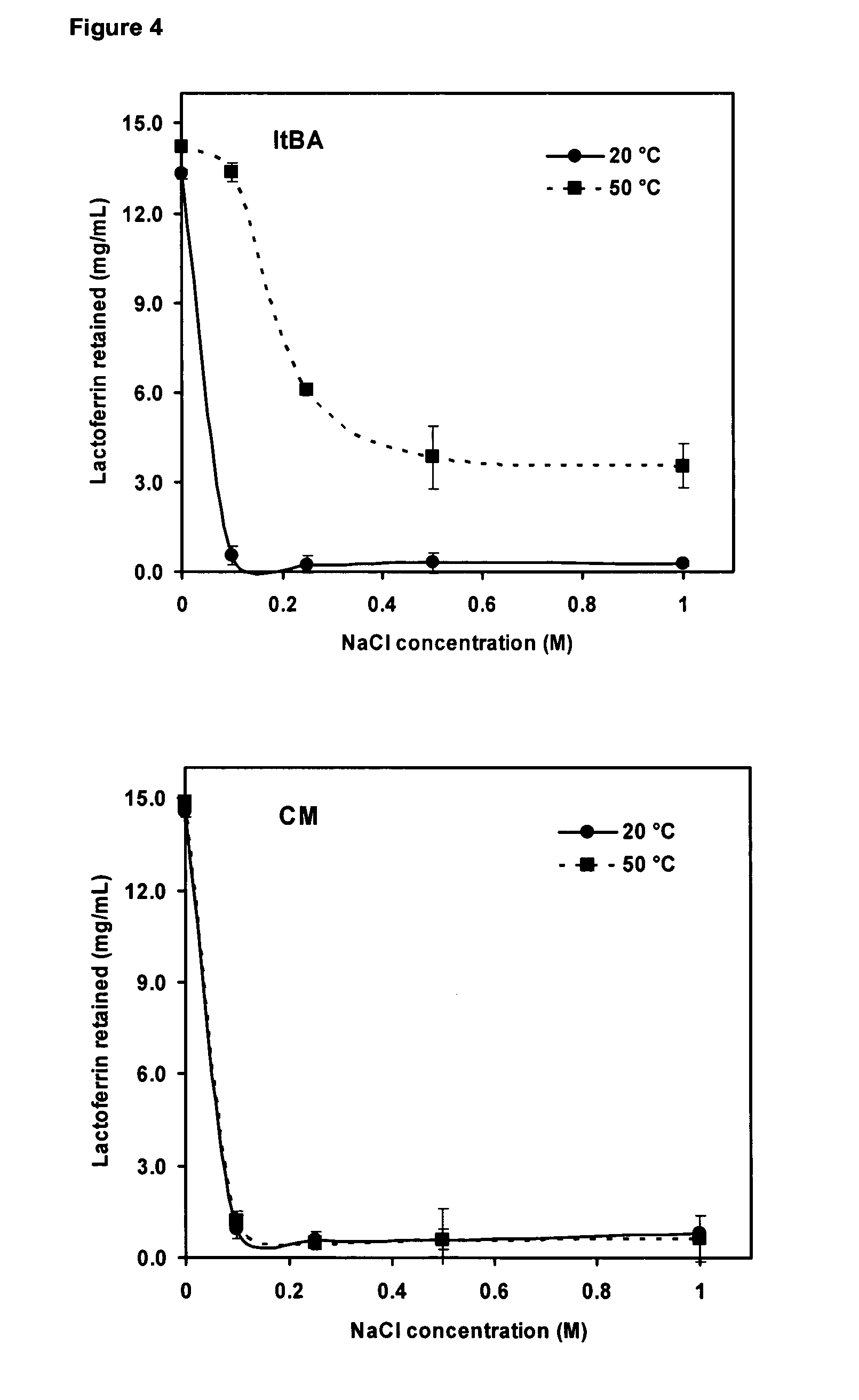Temperature-responsive polymer particles in protein separation applications
a technology of protein separation and temperature-responsive polymer particles, which is applied in the direction of peptides, cytochromes, transferrins, etc., can solve the problems of lack of operational robustness, lack of flexibility required for process applications in the food and other industries, and silica-based sorbents
- Summary
- Abstract
- Description
- Claims
- Application Information
AI Technical Summary
Problems solved by technology
Method used
Image
Examples
examples
Materials
[0136]Crosslinked agaraose particles (Sepharose® 6 fast flow) were obtained from Pharmacia Biotech (Sweden), lactoferrin sample was provided by Food Science Australia (Werribee). N-isopropylacrylamide (97%), tert-butylacrylamide (97%), acrylic acid (≧98%), 1-(ethoxycarbonyl)-2-ethoxy-1,2-dihydro-quinoline (∝99%), 4,4′-azo bis(4-cyanovaleric acid) (≧98%), N,N-dimethylformamide (≧99.8%) and N,N′-methylenebisacrylamide (≧98%) were obtained from Sigma Aldrich (USA).
Preparation of Crosslinked Agarose Particles of the Invention
[0137]A polymerisation initiator, 4,4′-azobis(4-cyanovaleric acid) (ACV), was covalently immobilized onto the amino functionalised Sepharose 6 FF using N,N-dimethylformamide (DMF) as the solvent and 1-(ethoxycarbonyl)-2-ethoxy-1,2-dihydroquinoline (EEDQ) as the condensing agent (adapted from Yakushiji et al., Anal. Chem., 1999, 71, 1125-1130). A cross-linked polymer matrix was developed on the ACV immobilized Sepharose by radical polymerization using N-isop...
PUM
| Property | Measurement | Unit |
|---|---|---|
| temperature | aaaaa | aaaaa |
| temperature | aaaaa | aaaaa |
| temperature | aaaaa | aaaaa |
Abstract
Description
Claims
Application Information
 Login to View More
Login to View More - R&D
- Intellectual Property
- Life Sciences
- Materials
- Tech Scout
- Unparalleled Data Quality
- Higher Quality Content
- 60% Fewer Hallucinations
Browse by: Latest US Patents, China's latest patents, Technical Efficacy Thesaurus, Application Domain, Technology Topic, Popular Technical Reports.
© 2025 PatSnap. All rights reserved.Legal|Privacy policy|Modern Slavery Act Transparency Statement|Sitemap|About US| Contact US: help@patsnap.com



